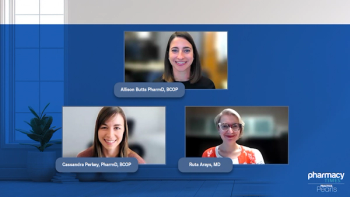
Utilizing Electronic Health Records to Optimize Shingles Vaccination
An expert discusses how enhanced EHR systems can boost vaccination rates by providing clinical alerts, integrating immunization histories, and enabling automated patient follow-ups—helping pharmacists identify opportunities, reduce missed doses, and improve overall vaccine delivery in retail settings.
Episodes in this series

Technology and electronic health records (EHRs) are viewed as essential tools for improving vaccination rates, particularly in busy retail pharmacy environments. The speaker emphasized that while pharmacists are focused on accuracy and completion of prescriptions, it can be easy to overlook broader patient needs like immunizations. EHRs with advanced features—such as clinical alerts and drug utilization reviews—could serve as crucial reminders, prompting pharmacists to consider vaccines not only based on age but also on patients’ underlying health conditions, as allowed by CDC guidelines.
Enhanced EHR capabilities could help create more targeted touchpoints. For instance, if a patient declines a vaccine, the system could schedule follow-up alerts after a few months, encouraging future engagement. Additionally, integrating state immunization registries into EHRs—especially in border regions—would allow providers to see a complete vaccine history, regardless of where the patient was previously immunized. This comprehensive view would improve the accuracy of recommendations and reduce missed opportunities due to incomplete records.
EHRs also offer tools for patient engagement, particularly with multidose vaccines. Automated reminders via calls, texts, or emails can help patients stay on schedule. This proactive communication encourages patients to return for follow-ups—either by appointment or as walk-ins—to complete their vaccine series. The technology can also prompt coadministration of vaccines when appropriate, such as offering a nonlive vaccine alongside another scheduled immunization. These subtle prompts can lead to more consistent follow-through by providers and ultimately contribute to broader and more efficient vaccine coverage.
Newsletter
Stay informed on drug updates, treatment guidelines, and pharmacy practice trends—subscribe to Pharmacy Times for weekly clinical insights.




















































































































































































































